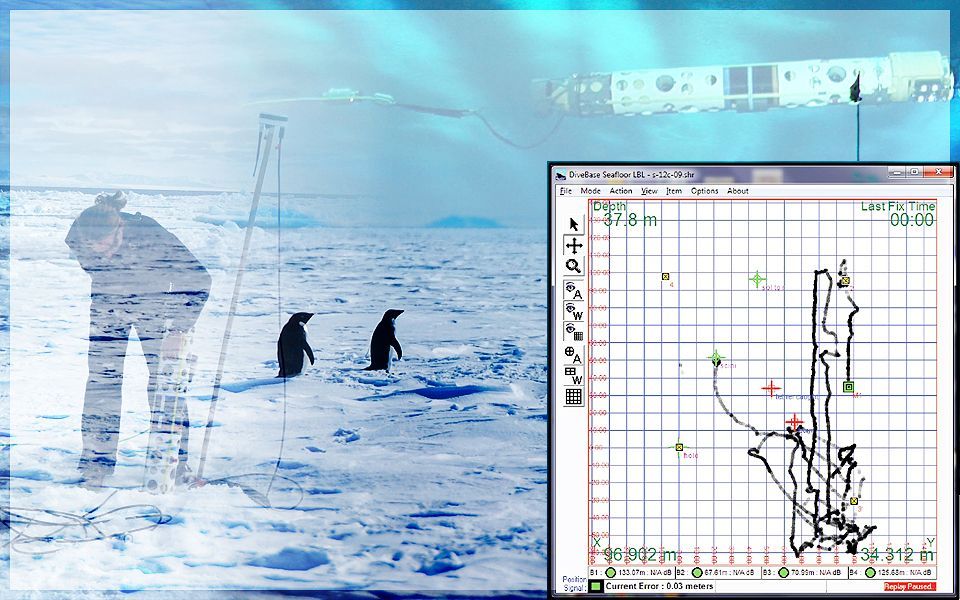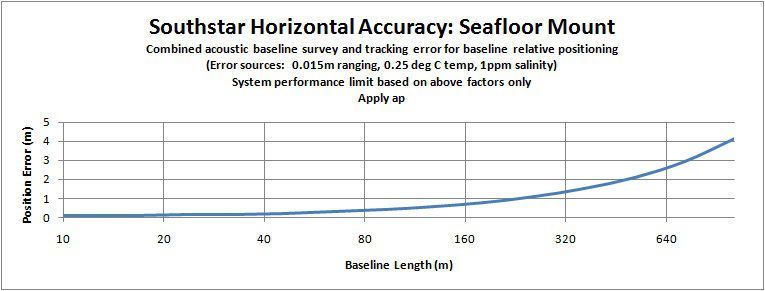SouthStar
Configuration 1 : Precision Seafloor Transects in Antarctica

SouthStar is probably the only underwater positioning system to have been significantly developed and field qualified in Antarctica for an Antarctic operation. The requirement was to precisely navigate the also Antarctic optimized, torpedo shaped ‘SCINI’ ROV along the sea floor for studies of the recovery of benthic eco systems after man made disturbances (past pollution at McMurdo base) and natural disturbances (ice berg groundings) alike. Underwater exploration systems are often bulky and complex. But, what was needed here was a compact positioning system that could be quickly set up by explorers operating with minimal resources in often extreme conditions of cold and wind and requiring through-the-ice deployment. To fit the bill, SouthStar baseline stations use small acoustic transmitters that simply were dunked through small holes drilled through the ice. Power and signal reporting is by radio modem from a small ‘whopper’ sized relay box on top of a pole. The streamlined SCINI itself was outfitted with a Red Bull sized pinger bottle, powered by a 9V battery.

At times this system along with the SCINI ROV was transported to the site by tracked vehicle; at other times helicopter transport was used. After development and qualification was completed with DSS on-site support, the system was operated independently by the science staff in numerous locations. Position quality proved highly precise and robust; motion of the vehicle of just centimeters were readily reproduced by the system.
SouthStar is probably the only underwater positioning system to have been significantly developed and field qualified in Antarctica for an Antarctic operation. The requirement was to precisely navigate the also Antarctic optimized, torpedo shaped ‘SCINI’ ROV along the sea floor for studies of the recovery of benthic eco systems after man made disturbances (past pollution at McMurdo base) and natural disturbances (ice berg groundings) alike. Underwater exploration systems are often bulky and complex. But, what was needed here was a compact positioning system that could be quickly set up by explorers operating with minimal resources in often extreme conditions of cold and wind and requiring through-the-ice deployment. To fit the bill, SouthStar baseline stations use small acoustic transmitters that simply were dunked through small holes drilled through the ice. Power and signal reporting is by radio modem from a small ‘whopper’ sized relay box on top of a pole. The streamlined SCINI itself was outfitted with a Red Bull sized pinger bottle, powered by a 9V battery.
At times this system along with the SCINI ROV was transported to the site by tracked vehicle; at other times helicopter transport was used. After development and qualification was completed with DSS on-site support, the system was operated independently by the science staff in numerous locations. Position quality proved highly precise and robust; motion of the vehicle of just centimeters were readily reproduced by the system.
